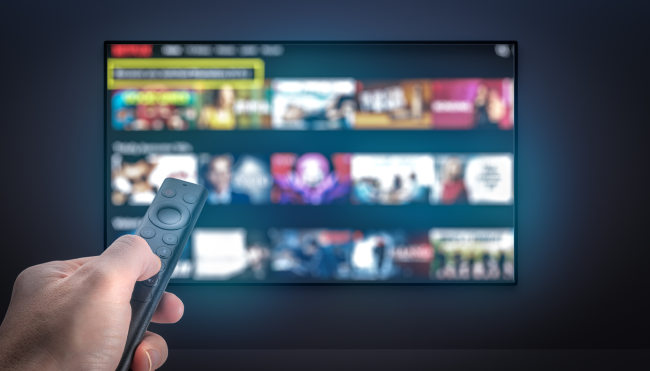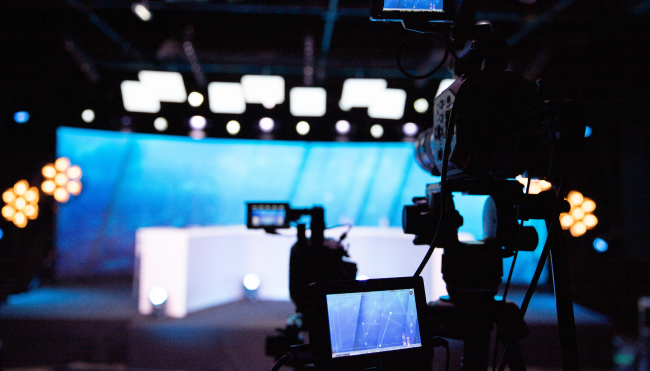- Why Amagi
-
Solutions
Contact UsBusinessWho We Serve
- Offerings
- AI
-
Resources
Contact UsINDUSTRY REPORTSAmagi FAST Report #15: The Power of Live Programming: A Catalyst for Streaming SuccessAugust 21, 2025Read More
-
Company
Contact UsNewsroomAmagi launches AI-powered Smart Scheduler to improve content programmingApril 3, 2025Read More
Blog
Embrace a unified broadcast workflow
By Sri Hari Thirunavukkarasu, SVP Sales, and Business Head EMEA, Amagi - September 27, 2021
When you do decide to adopt a unified broadcast workflow, there is a lot to think about – because there is a lot more you can do.
In the post-pandemic world, global media companies have shown increased willingness to make decisions about their wider infrastructure that they have been putting off until now. The obvious one being about migrating to the cloud. The global lockdowns and the forced remote operations were definite catalysts. However, the opportunities that new streaming TV and OTT platforms offer to monetize content are also forcing broadcasters to relook at their traditional strategies and business models.
There’s no denying that direct-to-consumer offerings have become a booming business for the big players dominating the VOD market right now. But with so much competition, broadcasters and rights holders are finding it challenging to grow their owned and operated apps and viewership through sustained investment in branding and marketing.
Broadcasters can seek inspiration from local, second tier and niche content companies that have benefited from the new star in the streaming TV space - Free Ad Supported TV (FAST) that has levelled the playing field in discoverability.
FAST platforms are enabling content owners to reach out to a new and bigger audience base while also raking in higher ad revenues. The big networks including NBCUniversal, Comcast, ViacomCBS and Fox have jumped into the fray with their respective FAST services – Peacock, Xumo, Pluto TV and Tubi to cash in on the comeback of linear TV. Linear channels featuring content from docuseries, news, sports and music to kids shows, weather and related events, and movies are making their way to the free ad supported universe.
Another dominating trend is more and more connected TV manufacturers and mobile manufacturers such as Apple, Roku, Samsung, Vizio, LG Electronics, TCL, Philips and Xiaomi building their own FAST or aggregation offerings across the globe.
We can certainly say that we are now operating in a super content aggregation world!
Need of the hour: A multi-pronged strategy
In this new landscape, traditional TV networks starting their digital content journey can benefit from a multi-pronged strategy. Along with their traditional cable and satellite, linear and VOD offerings, they need to start leveraging these third-party aggregators. AVOD, SVOD and even social media offerings all need to be employed in a well-rounded portfolio of content distribution.
Until recently, companies have been organized according to the structure of traditional TV networks. While the broadcast business is run by a CTO or VP of engineering and operations, a digital department takes care of the new digital streams. But as digital and OTT become a larger part of the business, it can longer be relegated to a corner as an add-on.
As the roles of Chief Digital Officer (CDO) and CTO begin to blur, broadcasters that hope to compete in the new digital landscape are presented with a choice. They can merge their teams via a single unified platform, or they can let digital take the driver’s seat. Recent proponents of the latter include Disney, which has been discontinuing some of its traditional linear channels in favor of its Disney+ service.
As we speak to more and more customers and industry leaders, it looks more like an inevitable trend to have one single organizational structure and infrastructure to address both these sides.
Tap into many opportunities with one workflow
Consolidating operations into a unified digital platform is not a pointless exercise in enforced modernization. It can start to open up whole new areas of business and opportunities that had been lying dormant. Companies with large content libraries can now launch on-demand offerings and ad supported linear channels that would have been utterly non-viable in a traditional TV network world.
Several of Amagi’s customers are now monetizing their massive content library that accumulated over time. With new streaming TV platforms, content owners can now better leverage their library, all using a single unified workflow that’s also integrated with third party systems.
- With a solid media asset management system in a unified storage infrastructure, these pre-existing content libraries can become a gold mine that can be leveraged across direct-to-consumer and the FAST space, thus filling in the gaps brought about by the shrinking of traditional broadcast revenues.
- With a unified infrastructure, you can in theory spin up as many live linear channels as you like, based on the various content parameters of your library. What once seemed to be the sole domain of broadcast is now moving to the cloud and is offering viewers more choice than ever before.
Suddenly, you can spin up 100 channels out of your content library that can address just about any interest area you can think of. We’ve seen many customers creating linear channels on a single theme. This new cloud-based model allows special interests such as niche sports to find an audience that may not be big on a local level, but globally can add up to considerable numbers. - The need to have a system for managing content rights, therefore, becomes more critical with rights that may have been acquired years ago, in a linear – even analogue – world, now being able to produce new revenue in a completely different environment. When it comes to OTT content, rights holders don’t only have to take into consideration geographies and time windows, but also what consumer devices they have rights to send to, and issues like rights for FAST versus on-demand OTT.
As content owners start seeing OTT become more and more valuable, they are starting to slice and dice their rights and sell individual device level rights. So, to keep a handle all of that, centralized content rights management is becoming critical. - Unifying workflows has also changed how advertisers do business. Traditionally, linear and digital ad sales would have been done separately. But buyers on the agency side start to integrate with an eye to buying ad space on a connected TV or connected TV plus basis. Content providers can start to sell based on the audiences for their linear and digital audiences, and make the process seamless for the advertiser - with one bill at the end.
- Unified workflows make for much easier monitoring, too. A traditional network operation center monitored linear and broadcast, with digital monitoring largely left to its own devices. As the importance of digital has grown, and monitoring becomes more important – and easier – the monitoring of the rest of the operations center begins to fall under the digital realm as well.
Making the transition to cloud-based workflows
Transitioning to cloud can devolve into a turf war between departments about who is going to own it. So, the mandate has to be top down, with clear organization-level directive for a digital transformation of the entire company.
Typically, this involves transferring to cloud from on-prem infrastructure. That would mean having a centralized schema, especially in terms of metadata. It’s also about simplifying the interfaces for different teams so that different users can all easily access the same content, no matter where they are working in the organizations. Digital teams that have been used to operating independently from much of the business may have to adapt to the greater responsibilities as well as company-wide implementations, which need buy-in from multiple teams.
With all this in place, the power and agility of the digital infrastructure can be harnessed in transformative ways. One of our customers that unified their entire operations said, ‘My digital team is asking me to start a channel within one day’. For something that previously took three-month planning, they can now say, ‘There’s a new sporting event, let’s launch a pop-up channel over the weekend.’
This speed and flexibility is illustrated in the new infrastructure a high-profile Amagi customer is using to make its live, linear programming instantly available on-demand. The content becomes available not just after the event is over, but is available in segments as the live program is still playing out. Traditionally, with separate workflows, the time from when the live event is over to when it becomes available for VOD might be eight hours. With our solution, after 30 minutes of a one-hour show, the first 15 minutes of content is already available on-demand for pickup users to watch. We can do that, because now we have the live event recording, transcoding and delivery all in a unified platform.
Amagi advantage
If you are looking to leverage unified cloud-based workflows for content creation, distribution and monetization across broadcast and streaming TV platforms, reach out to us at cloudandme@amagi.com
Related Blogs
Get started
Increase revenue and reach with our Broadcast & Streaming solutions.
Cloud modernization. Streaming unification. Monetization. Marketplace.
 German
German French
French Spanish
Spanish Korean
Korean Japanese
Japanese Portuguese
Portuguese


